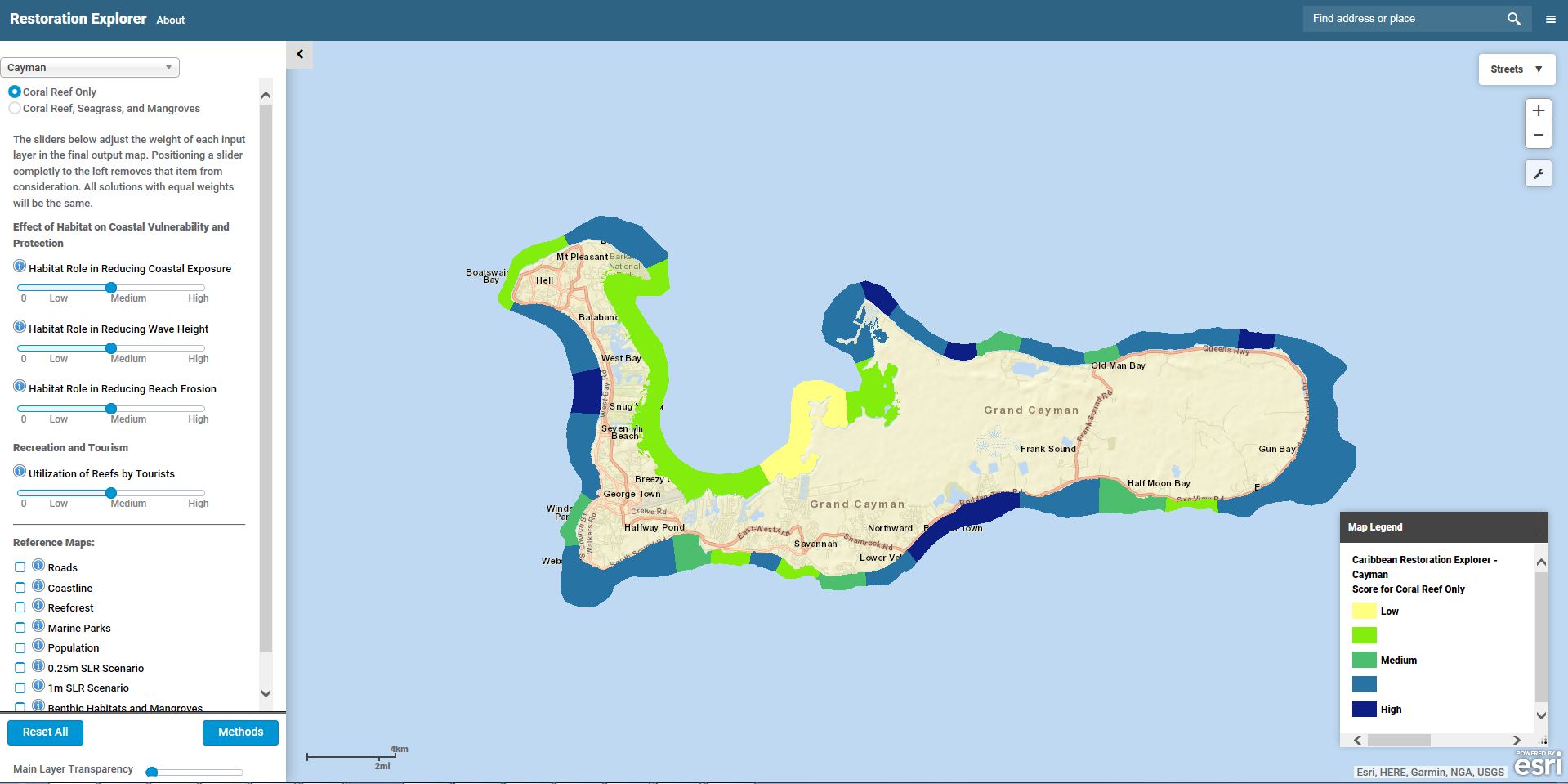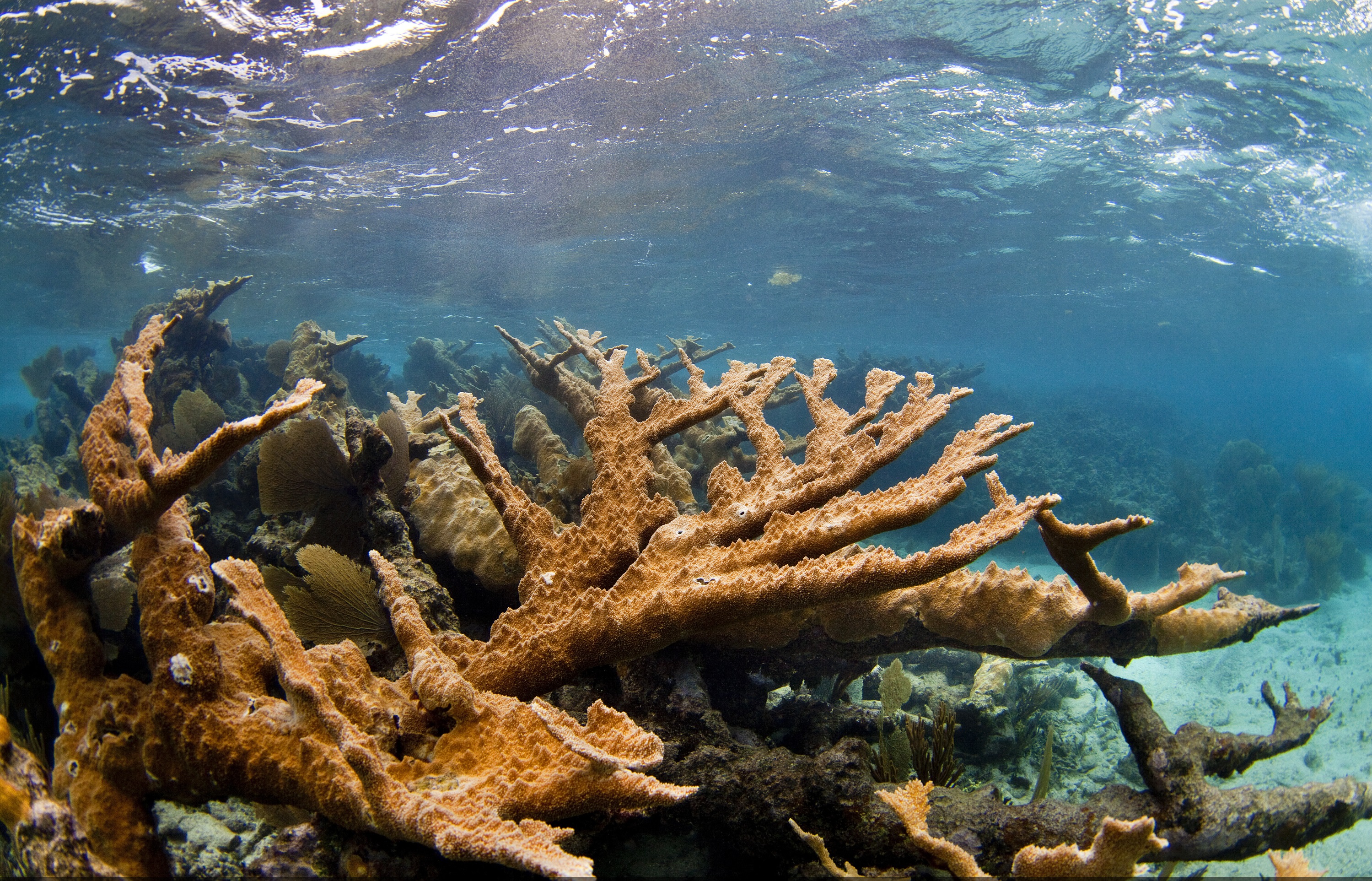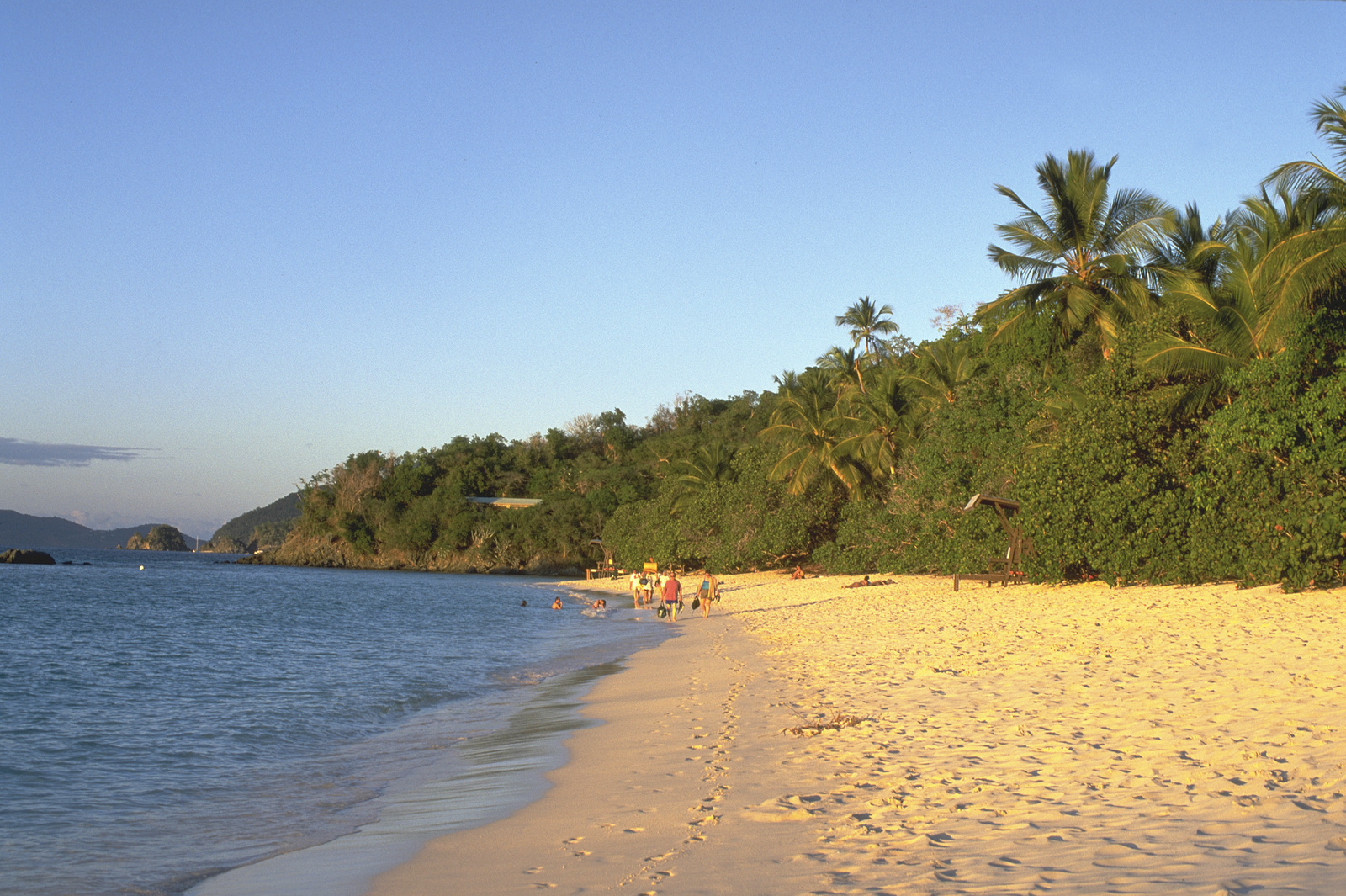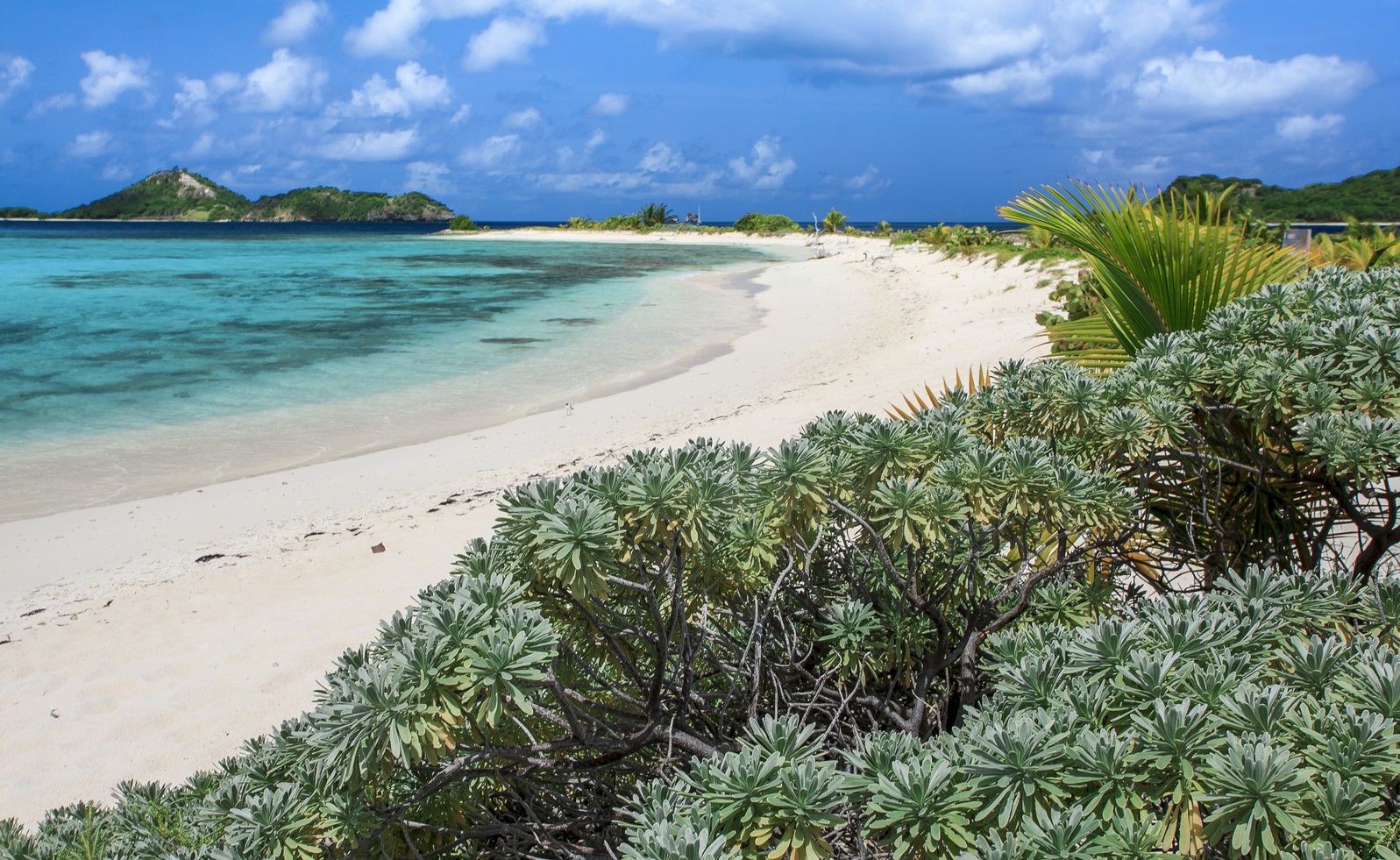
Ecosystems: Coral Reefs, Mangroves, Seagrasses
Ecosystem Services: Coastal Protection, Fisheries, Recreation & Tourism
Projects & Places: Cuba, US Virgin Islands, Bahamas and Andros Island, Cayman Islands, Region-wide projects
Approaches: Coral Reef Larvae Connectivity Model, Unmanned Aerial Systems
A Mosaic of Marine and Coastal Habitats
The Caribbean region is one of the world’s most complex mosaics of marine and coastal habitats, comprising 10 percent of global coral reefs, 18 percent of seagrass beds, and 12 percent of mangrove forests. It also boasts 1,400 species of fish. Most of the region’s 40 million people are directly or indirectly dependent on the health of coastal marine ecosystems, with a robust tourism industry that provides both a challenge and an opportunity for advancing conservation at ecologically and socially meaningful scales. More information on the Caribbean team’s work can be found here and on their Facebook and Instagram. Visit the Caribbean Science Atlas for data and information resources for marine management in the Eastern Caribbean.
Projects and Places
Our Approach
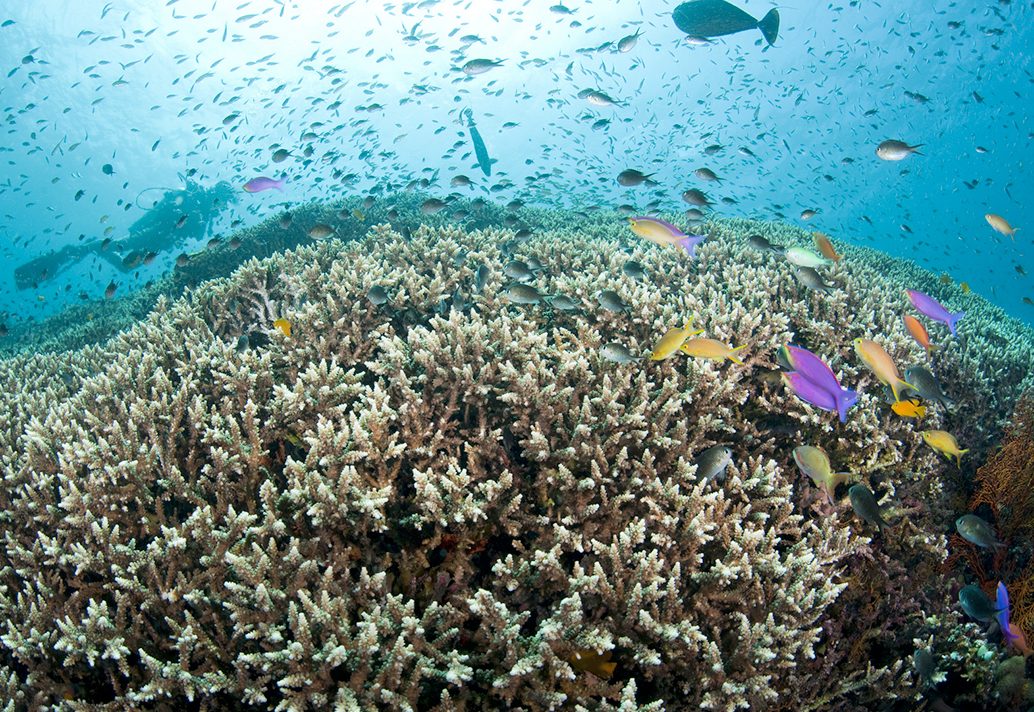
CORAL REEF LARVAE CONNECTIVITY
We have designed and implemented the first ocean-current coral reef larvae connectivity model
Read More
(based on ocean data spanning four years) that was used in Marxan to design a regional MPA network that includes important reef network connections. The identification of important reef connectivity metrics guides the selection of priority conservation areas and supports resilience at the whole system level into the future.
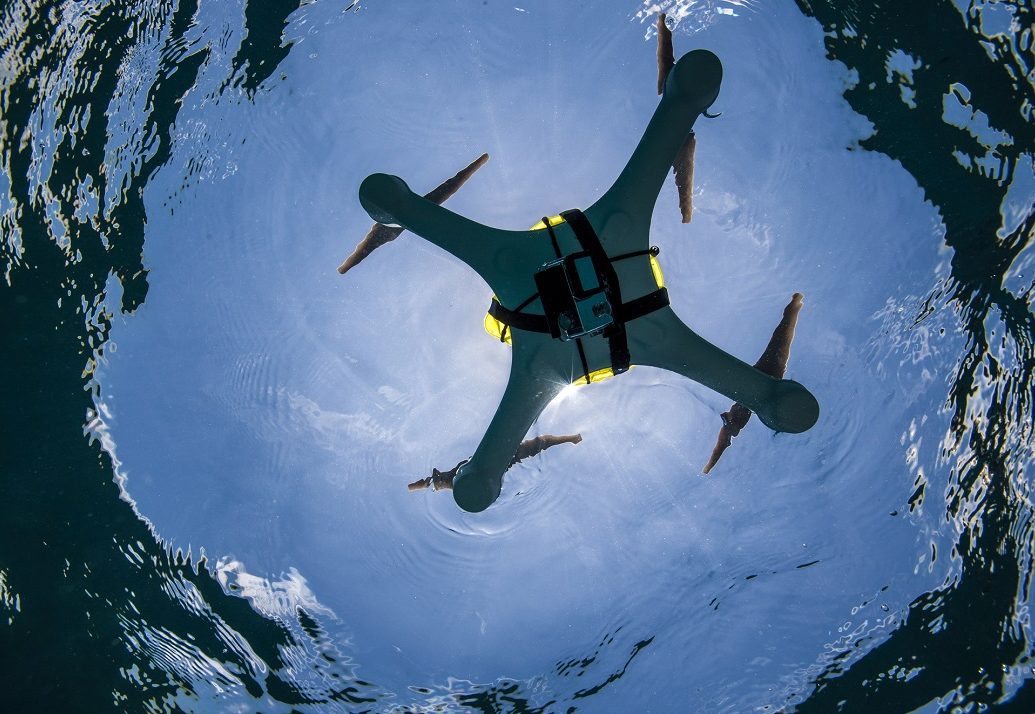
UNMANNED AERIAL SYSTEMS
The Caribbean team has been using Unmanned Aerial Systems (UAS) since 2014 specifically for mapping and monitoring coral reefs and mangroves.
Read More
We have been developing methods and techniques for characterizing the biophysical attributes of these habitats, training our partners in over five countries how to carry out a monitoring program using UAS techniques. Our UAS solutions include both aerial and surface vehicles to capture features at multiple scales. Recently, we have developed a new low-cost and transportable small Unmanned Surface Vehicle (sUSV) that can be used by marine managers to map and monitor marine environments in shallow areas (<20m). This system collects stereo-paired photos, depth, location, and heading that can be later processed to create underwater high resolution orthophoto mosaics and digital surface models. Both the aerial and surface solutions provide products with very detailed images and measurements that can be used for small monitoring changes and assessing health conditions for mangroves and coral reefs. Learn more here. Explore sample aerial coral reef mapping data collecting using drones in Isla Catalina, Dominican Republic, here.
TNC is also working with Planet, a group specializing in state-of-the-art satellite imaging technologies, and the Carnegie Institution for Science, to take a space to sea approach to assessing the presence, composition, and health of coral reef ecosystems. Planet’s constellation of over 200 satellites collect images providing details for features as small as 10 feet, and are compiled data. Specialized aircraft, the Carnegie Airborne Observatory, to collect hyper spectral images at targed locations. This technology has the capacity to map each pixel in an image to identify the chemical fingerprint and composition of habits, permitting scientists to map not only individual species, but detect stress levels. Imagery data are validated and verified using drones, divers, and drop cameras. Read more about this project here.
Project Partners & Supporters
Top image: ©Kermit Amon-Lewis. Photo Credits in Text: © Marjo Aho, © Ian Shive, © Andy Drumm. Tiles (left to right): © Jeff Yonover, © Tim Calver



